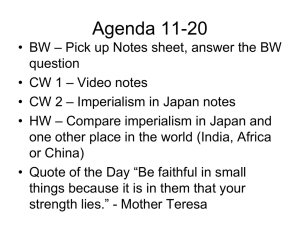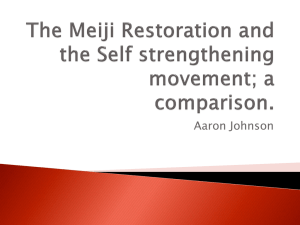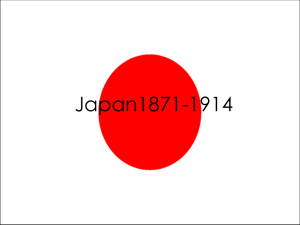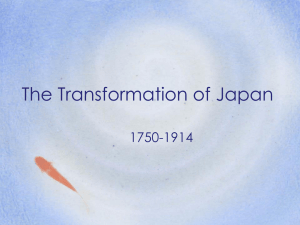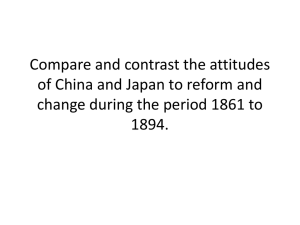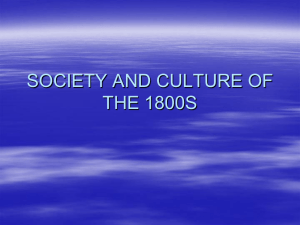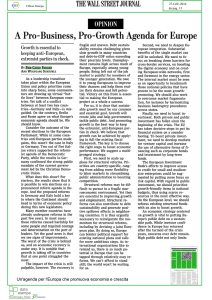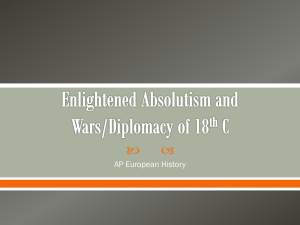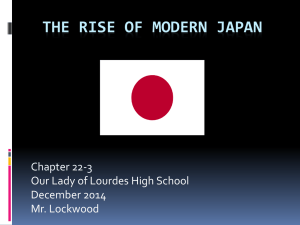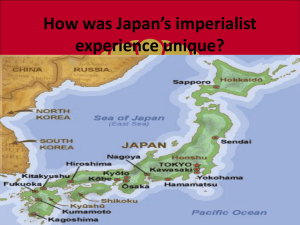Meiji Restoration vs Self
advertisement
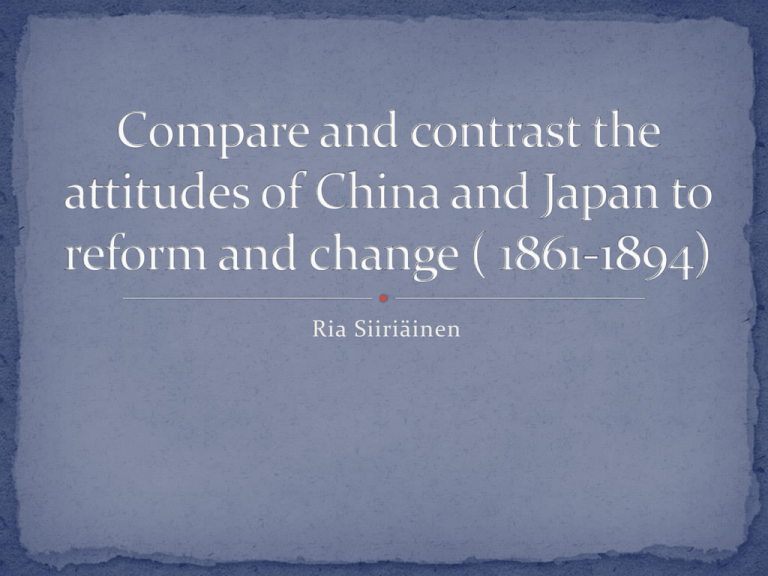
Ria Siiriäinen In the 19th century both Japan and China experienced military, economic, political and social reforms as a result of the “opening up” of each by Western powers. In the case of Japan this was the Meiji Restoration and in that of China the Self-Strengthening movement. Both movements hold some similarities however there are vast differences. These differences are the key factors that can demonstrate why the Meiji Restoration was a success whilst the Self-Strengthening movement accomplished so little in comparison. The goal of China was to restore Confucian values and ideologies Japan was more open to reform. China reluctant to accept foreign guidance because of history of dealings with the Westerners in the past. Japan again, more open and looked to the Westerners for guidance and willingly accepted help and sought advice. China’s leaders were corrupt and were more interested in personal gains than to priorities the development of the nation. Dissimilarly the reforms in Japan were carried out by a centralized government who sought what was best for the country and was more determined to modernize Japan. China did not have the funds needed to carry out the necessary changes it required to modernize. Japan in contrast did possess the funds. Overall Japan better comprehended the importance to modernize and industrialize in order to strengthen Japan and understood that it needed the help of the Westerners to do so. China was not as comprehensive. Japan carried out changes with little opposition and little blood shed The road China’s Self-Strengthening however was a bloody one China under-went a Civil War. Japan’s reforms were carried out nationwide whilst China’s strengthening was more concentrated to certain areas (urban). Both Japan and China did seek foreign guidance to carry out their reforms although Japan did so to a greater extent. Both understood the need for economic, social, military and political reforms. Both wanted to limit Western influence in their nations and wanted to reinstate or maintain traditional values and ideas China Confucianism Japan Restoration of Emperor to power/loyalty to the Emperor + traditional Japanese values maintained. However, Japan did adopt much of the Western culture and implemented this into their daily lives. Japan Rangaku and Kokugaku schools of learning. Rangaku was Dutch learning – more influenced by Western education system. Hired foreign teachers to teach in Japan. Many students were sent overseas to universities. Japan adopted Westernstylized clothing into their everyday lives and other Western technologies and inventions like clocks and railway lines. China Stuck to a more traditional system and education was heavily based on Confucianism. Some students sent abroad to study. Both took influence from Westerners. Both purchased weapons from overseas and modeled their ground armed forces and navy based on the European powers. Japan was able to develop a much more efficient and effective modern army that China. Evidence of this can be seen in the Sino-Japanese War where Japan triumphed and the Chinese army’s weakness and ineffectiveness was revealed. Conscription in both countries. Building up of infrastructure and industries. Factories Transport and Communication lines Change in currency of Japan. Tax Reforms Ownership of properties Trade Again these were carried out to a further extent by Japan than by China. Japan’s industries grew to match those of European powers. In Japan the Emperor was restored + there was a centralized government whose top priority was the advancement, modernization, industrialization of the country. In China, government was corrupt and sought personal aims before what was best for the modernization of China. The differences between the Self-Strengthening movement and the Meiji Restoration out weigh the similarities. These differences mainly sprung from the differences in attitudes of Japan and China and it was the attitudes of each that brought about the success of one attempt at modernization and the failure of another. China’s leadership was corrupt and were too proud to accept the Western aid that they needed. Japan on the other hand was able to understand that Western influence was unavoidable and necessary. Although both wished to limit foreign influence and maintain their own traditions, Japan knew that it first needed the Westerners in order to then be strong enough to get rid of them.
